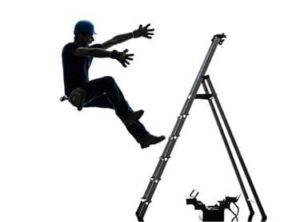
“It’s not the fall that gets you” the old skydiving joke goes, “It’s the sudden stop at the bottom.” Falls are one of the greatest dangers in workers’ compensation. We fear many other perils, but more than half a million people die worldwide each year after falling. Falls are the second leading cause of death by injury, after car accidents. In the United States, falls cause over 30,000 deaths per year (more than four times the number caused by drowning and fires combined). Nearly three times as many people die in the U.S. after falling as are murdered by firearms.
As a cause of injury, falls are even more significant. More patients go to Emergency Rooms in America after falling than from any other form of accident according to the Centers for Disease Control and Prevention. Falls account for nearly three times the number of those injured by car accidents. The cost is also huge. Falls account for more than one-third of Emergency Room budgets and often lead to more expensive injury claims.
Since falls can happen anywhere at any time to anyone, it is not surprising they are prevalent. The most dangerous spots for falls are interior settings of every day life such as supermarket aisles and stairways. Any fall can change life profoundly, taking a worker, for example, from a healthy life to a grave disability instantly. Interestingly, scientists are now encouraging people to learn how to fall to minimize injury. Training in how to fall can actually help determine the outcome of the injury. (The Week, September 8, 2007). Most research in the area of falls relates to “balance maintenance,” how we perform activities like standing, walking, and transferring without losing balance. Another factor in the seriousness of the injury after a fall is what condition one is in at the time of the fall. A Yale School of Medicine study ( published in The Journal of American Medical Association in 2013) found the more serious a disability one had beforehand, the more likely you will be severely hurt by a fall. Scientists studying falling are developing “safe landing” responses to help limit damage from falls. The key, apparently, is to roll and to try to let the fleshiest parts of your body absorb the impact. Young people often break their wrists because they shoot their hands out quickly when falling. Older people break their hips because they do not have their hands out quickly enough. Most scientists indicate if you are falling, protect your head first. Significant research in this are continues.


